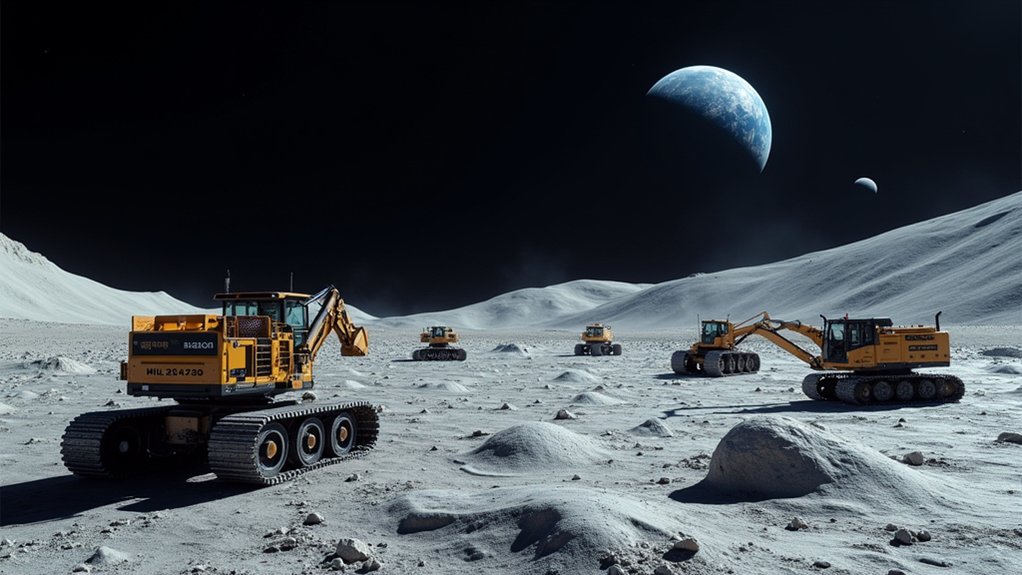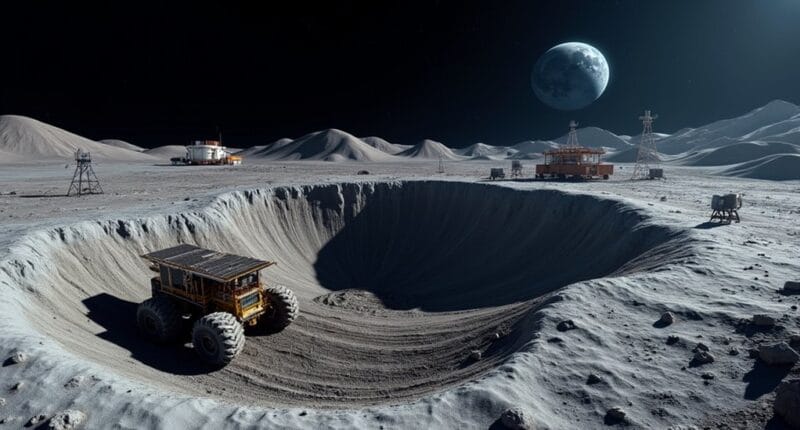The Moon isn’t just a pretty night light anymore – it’s a trillion-dollar jackpot. Billionaires and governments are racing to claim its vast resources, from water ice to rare earth elements and Helium-3. Companies like SpaceX and Blue Origin are developing massive rockets while testing 3D-printed buildings and mining equipment. The lunar surface offers unique manufacturing advantages, scientific breakthroughs, and a strategic pit stop for Mars missions. This modern space race makes the 1960s look like child’s play.

How quickly can humanity turn Earth’s closest celestial neighbor into a money-making machine?
Billionaires and governments are throwing serious cash at this moonshot, and it’s not just about planting flags anymore.
The lunar surface is packed with goodies – water ice, rare earth elements, and that sweet, sweet Helium-3.
The Moon isn’t just a chunk of rock – it’s a treasure chest floating in space, loaded with tomorrow’s must-have resources.
Talk about prime real estate.
NASA’s not messing around with their Artemis program, pumping $3.2 billion into Moon-to-Mars development for 2025.
And they’ve got company.
SpaceX and Blue Origin are building massive rockets that can haul serious cargo – we’re talking 100 metric tons per trip.
These aren’t your grandpa’s space missions.
They’re building highways to the stars, and everyone wants a piece of the action.
The Moon’s got perks you can’t find on Earth.
Low gravity makes manufacturing a whole new ballgame.
Want to build giant solar panels?
Easy.
Need a pit stop before heading to Mars?
The Moon’s got you covered.
It’s like having a cosmic gas station with a built-in factory floor.
And those resources buried beneath the dust?
They’re not just sitting pretty – they’re waiting to fuel a whole new space economy.
Private companies are jumping in headfirst, thanks to NASA’s Commercial Lunar Payload Services.
They’re testing everything from 3D-printed buildings to autonomous mining rigs.
The tech’s getting serious – life support systems, communication networks, the works.
It’s like watching a sci-fi movie, except the special effects are real.
This isn’t just about money, though.
It’s about power.
Nations are scrambling to stake their claims, treating the Moon like the next Silicon Valley meets Gold Rush.
They’re writing new rules, signing treaties, and positioning themselves for lunar dominance.
And those public-private partnerships?
They’re not just handshakes and press releases – they’re the backbone of this new space economy.
The Gateway space station project’s elimination signals a dramatic shift in NASA’s lunar strategy.
Four companies have already begun planning missions to collect Moon dirt and rocks for NASA’s research initiatives.
The race is on, and nobody’s planning to finish second.





